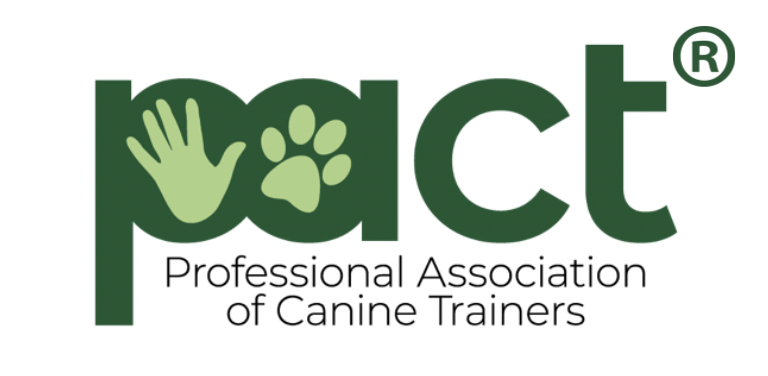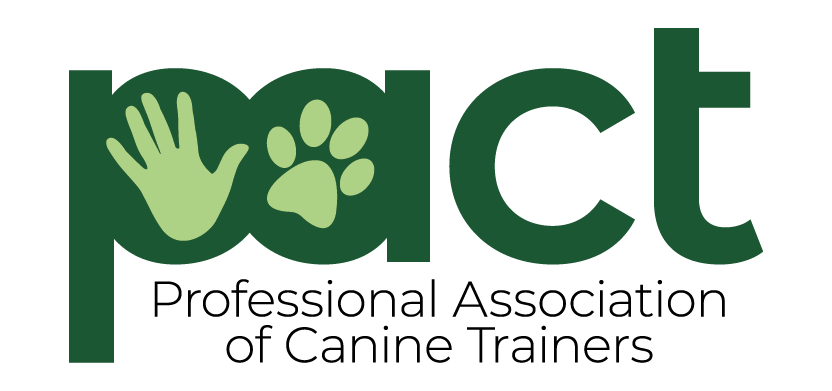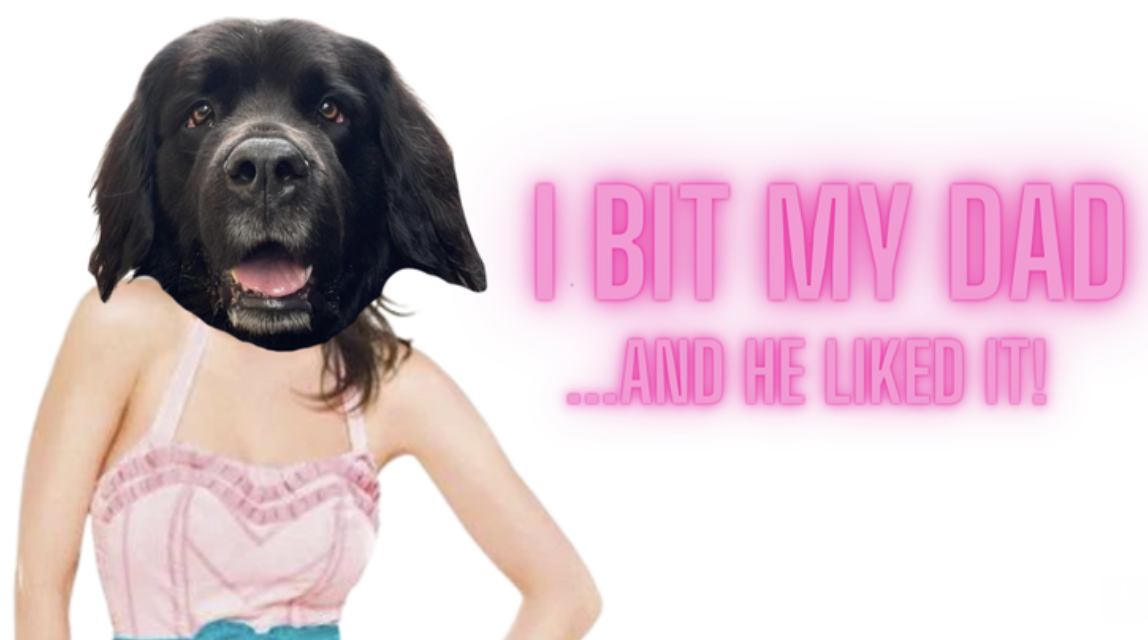I BIT MY DAD…
AND HE LIKED IT!
By Steve Goodall
Published 2nd April 2024
Okay so that is a slightly inflammatory title I admit it. Hopefully it got your attention though right? We recently launched our “Introduction into Canine Communication” free mini course and the take-up on this course has been incredible. We hope that you’ve all enjoyed it. So for today’s PACT Lunch I found myself reflecting on the wonderful, yet sometimes complex, ways our dogs can communicate and started reminiscing on something that happened a few years ago…
The year was 2020 and we were into our fifth week of lockdown here in the UK. We were having a wonderful late spring heat wave (minus the existential dread of a global pandemic) and I remember, one morning, opening my eyes to bright sunshine leaking through the curtains and the sound of bird song filtering through the slightly ajar window. When, however, I came downstairs I was taken back by a new soundscape. Something far removed from the twitters and squawks of Chiffchaffs and Wrens, heralding in the morning. It sounded as though someone was churning a bucket of sloppy porridge while listening to an audio track of a colonoscopy. I was still tired but it only took me a few seconds to find the source. The curious sound was coming from Peaches the gorgeous, but giant, Newfoundland we share our house with. This peculiar sound was coming from her stomach.
It was pretty clear to me she wasn't feeling too good as she didn't greet me with her normal "gusto" but it also struck me that she might be hungry, after all, my stomach was also making noises in preparation for breakfast time.
I prepared her a smaller meal than usual and placed her food bowl down in front of her to see if she fancied eating. Peaches, on occasions, likes to take a second or two to think about her actions. We call this "buffering". She will weigh up her choices and carefully pick her next move, it's one of her many endearing qualities. I waited for her to tuck in but she didn't she just stood over her bowl looking at me with a state of worry/bemusement on her face.
Now what happened next I need to caveat. I often hand feed Peaches. She has never shown any signs of guarding food or objects. She is also a girl who loves to sleep and can sometimes require a bit of time to get going (especially in the morning). I have also, on occasion, picked up a few biscuits from her bowl and hand fed her. I have only done this a handful of times, and always observing her body language to see signs of stress, which she has never shown. Clearly, however, today she wasn't feeling right at all.
As I reached down to pick up a biscuit it happened. At the speed of light she went to bite me. I pulled my hand back quickly but by the time my sympathetic nervous system kicked in Peaches had done the deed. It was FAST, It was shocking and totally unexpected in the moment.
I looked at my hand and was pleased to find absolutely no injury at all. I had definitely felt her big teeth clasp on but as soon as any pressure was applied she had immediately taken the pressure off again and backed away.
This was communication. My big gentle souled Newfie had found herself in a predicament. She felt unwell, perhaps her belly was hurting. She loves her breakfast, but couldn't eat it right then. The bowl had been placed down and that immediately caused conflict in her "I love food, but feel rubbish", I imagined her inner monologue to be. Then along came stupid, tired Steve reaching his hand out towards the food as if, in her mind, I might remove it. She was telling me to leave it alone.
From Peaches perspective, there was a really good reason for this behaviour. This snapping also doesn't necessarily mean that worse behaviour is inevitable in similar situations. To put it simply, dogs can’t use words to talk to us. She can’t say, “Please don’t take my food. I don’t like it.” Instead, she communicated via one of the only means available to her – she snapped at my hand.
To us human animals these expressions of aggression can seem unacceptable behaviours. However, for a dog, they’re simply part of the way they communicate. Because Humans and dogs can have entirely different ways of communicating, there are often misunderstandings and miscommunications across the species divide. Many dogs, for example, are uncomfortable with being hugged or being approached head on. For us human animals we generally intend to be friendly when we do this, but dogs may see these kind of behaviours as intimidating or threatening, and (of course) react by communicating like a dog.
The great news is that this snap was Peaches way of communicating a warning — and, in that moment, Peaches chose to warn me instead of biting. What a good girl!
In the past (and still unfortunately in the present) people have viewed these behaviours (growling, snapping and biting) as rude, unacceptable behaviours. People may tell you "Your dog is dominating you, you need to nip that in the bud and teach them who is boss". This notion can lead to all kinds of horrible human-centric reactions as we are predominantly a species that likes to communicate through punishment. I’ve seen and heard of such behaviours being “treated” with alpha rolls (pushing the dog down onto the ground and onto their back), stare-downs (a staring match with your dog until they look away, which supposedly signals their acknowledgement that you have won), And you even get, in extreme cases, people (and trainers) advising worse methods like shock collars to help you overcome these issues.
Let's be clear. The science is out there on this topic and although there is a wealth of information and studies that now exists about the potential hazards and fallout of these training techniques, people may still continue to use them, generally, in lieu of knowing any better. And please don’t read this as me saying you should just accept getting a snap or bite from a dog but, what I would like is for us to learn to understand our dogs better. Provide the safety, attachment, routine, training and predictability that builds confidence in situations AND understand that dogs can and will, at times, communicate like a dog. After all, we ask so much of our dogs the least we can do is try our best to learn to understand how they feel and communicate.
So there I was, sat in my kitchen, staring at my hand and looking up to Peaches as it hit me. I had an overwhelming sense of pride rush through me for Peaches. We had had a conversation. She had showed an amazing display of Bite Inhibition (a behaviour where the dog learns to moderate the strength of their bite) and all was well. I ran upstairs immediately to tell Corrin how good Peaches had been and, more importantly, what I had learned from the whole situation.
I learned that in those circumstances I need to be careful not to throw my sausage fingers around. Peaches is more than capable of feeling pressured around food in certain situations and, although she had never shown signs before, this will inform me how to act in the future so she will not have to escalate her behaviour.
So the moral of this story is that we really do want, and need, our dogs to communicate with us, to have those conversations. We need them to feel safe and comfortable, of course, but we also want them to warn us when they feel uncomfortable or threatened and (most importantly) we want them to know we’ll respect that warning and learn from it. Knowing this our relationship is bound to flourish.
Onwards and upwards.






